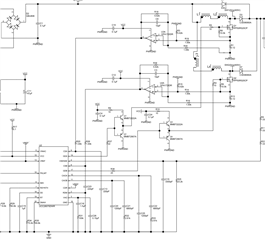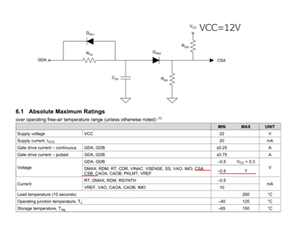Tool/software:
Hi team,
I have two questions.
1.As in the reference circuit, current sensing is done with a resistor.
Input to the CS pin is via an op amp, but in the worst case, VCC is input to the CS pin.
Since VCC is used at 12V, will it be destroyed if it exceeds the maximum rating of the CS pin?

2.In the offset circuit example in the data sheet, it is pulled up to VCC, but is it okay to pull it up to a voltage higher than the CS pin's rating?

Best regards,

